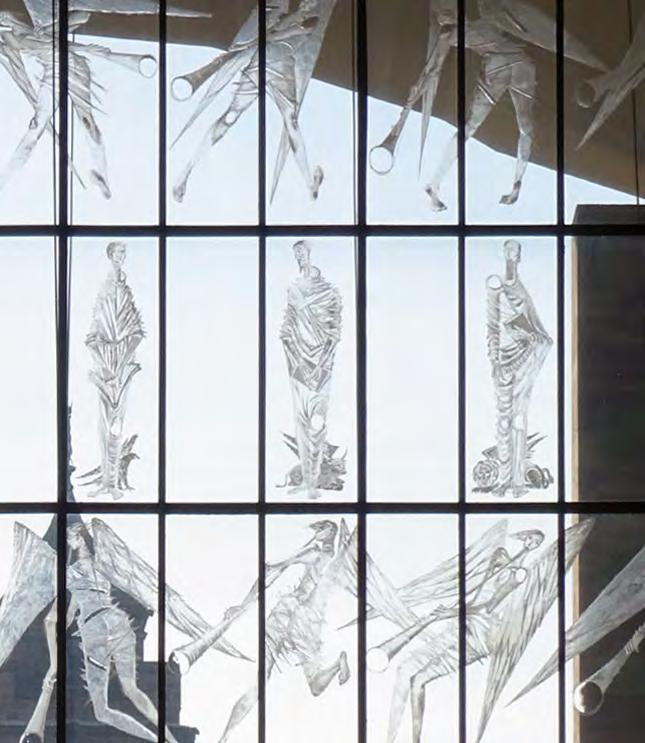CONSERVATION FRAMEWORK
5.3.13 RESEARCH AND UNDERSTANDING
5.3.9
Visitor facilities and access
Chapter has the opportunity to engage with, adopt and implement the policies set out within this CMP as a working tool for future decision making. The CMP should be made available to all the relevant staff to ensure they are familiar with its contents and the principles that underpin its use.
5.3.10
Interpretation
VULNERABILITIES AND CONFLICTS
See also:
HERITAGE CONSIDERATIONS The Cathedral has been well researched and continues to be the subject of in-depth publications. This CMP has not sought to replicate this knowledge, but to synthesise the essence of this into a useful tool to support the management of change. Where necessary, this CMP has set out key texts for further reading but has also been clear on where gaps in our understanding lie. As proposals move forward and further understanding is gained, there will be an opportunity to update this CMP to incorporate new knowledge. Research is a dynamic process and should not end here. It is also true that this CMP could never capture everything one would wish to know about the Cathedral. The research questions posed by this report should be taken as starting points for future academic study or practical investigation to delve further into the detail of specific components or spaces.
There are many areas of research still to address and gaps in knowledge that should be prioritised within future research initiatives. These research questions relate both to the condition and performance of the building as well as a greater understanding of its significance. Increasing understanding of significance: • Further research into the international context of Coventry Cathedral, both in terms of its architecture and liturgical form, would be beneficial. •
Archaeological assessments of the ruined cathedral have not yet been as extensive as those at the priory.
•
Archaeological investigation at the site of the new cathedral is not extensive.
•
Greater certainty on those components of the Cathedral that may, or may not be, designed by Spence. Further research into Spence’s studio practice.
•
Systematic interrogation of the Cathedral archives would be beneficial to draw out and shape further research questions.
141
•
More research should be carried out into people’s perceptions of the place, including what value they place on it and why. These are likely to change over time and in response to local and national events.
•
Understanding of how different audiences engage with the Cathedral, which will help to inform how spaces could be repurposed.
•
Research into what the concept of Reconciliation means to people and how is it understood both locally and internationally. This could be considered alongside how successfully the Cathedral articulates its own perception of reconciliation.
Increasing understanding of building performance: • Further research into conservation solutions that have been successfully trialled on similar Post-War buildings nationally and internationally. •
Monitoring and research into how the built fabric has been and is likely to perform over time. There has been little historic evaluation of repair or original construction methods, which is likely to be detrimental to understanding.
•
A good deal of work has been completed to understand the environmental conditions in the building and it is generally understood what needs to be done - but ongoing monitoring of environmental conditions should continue.














